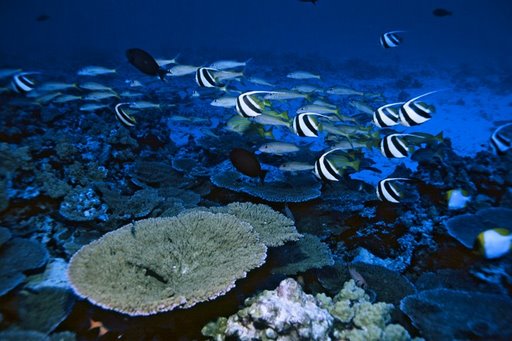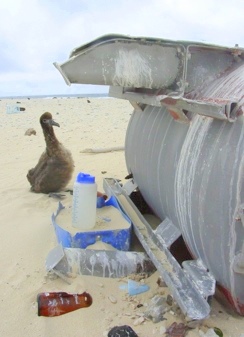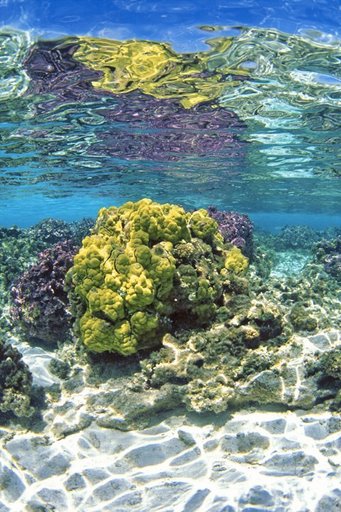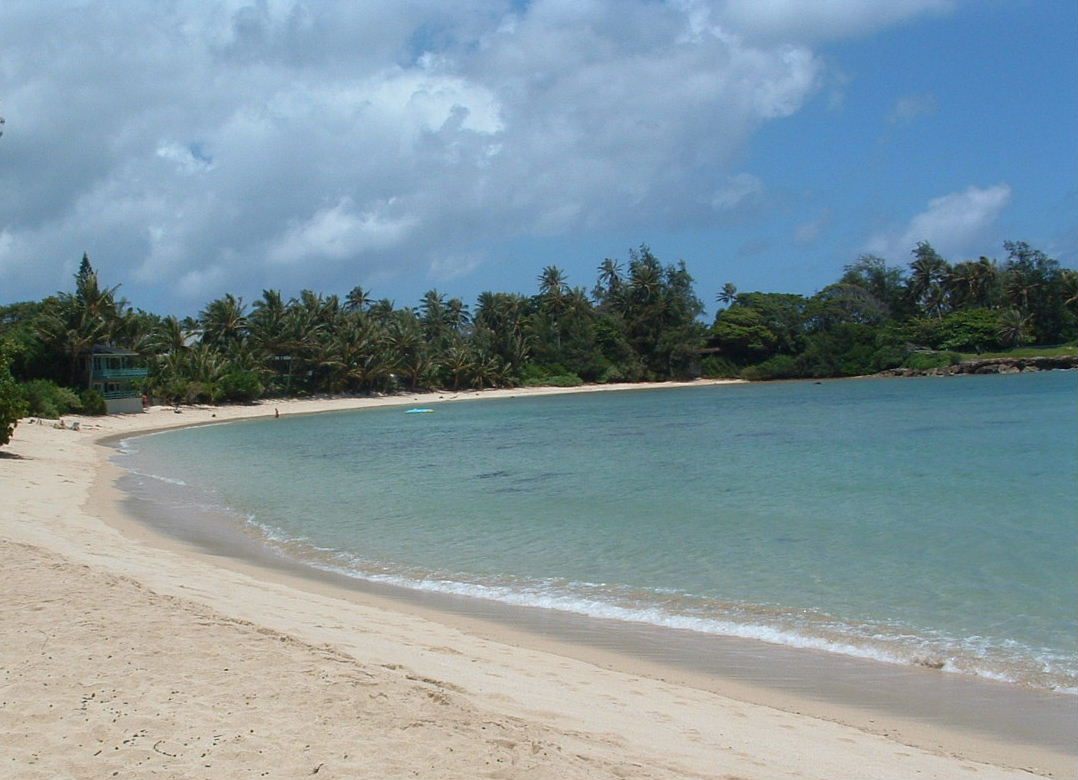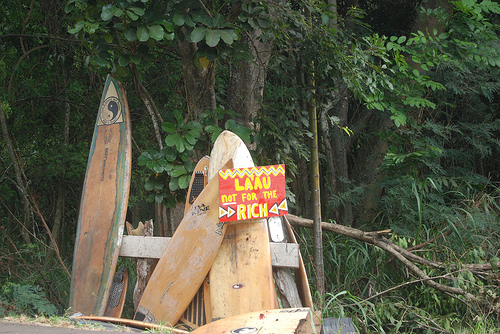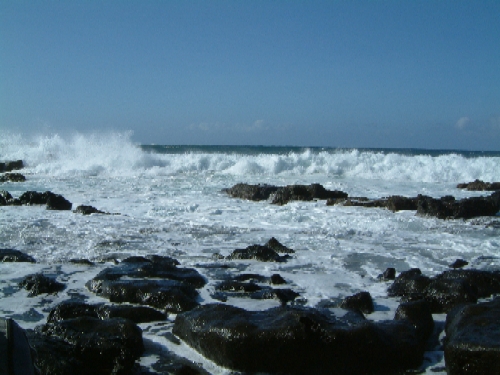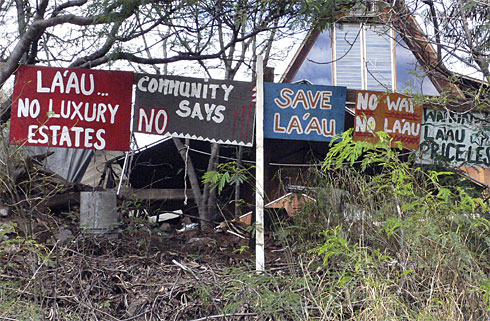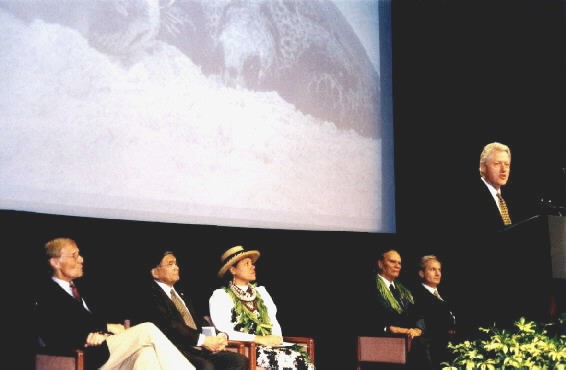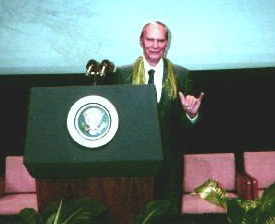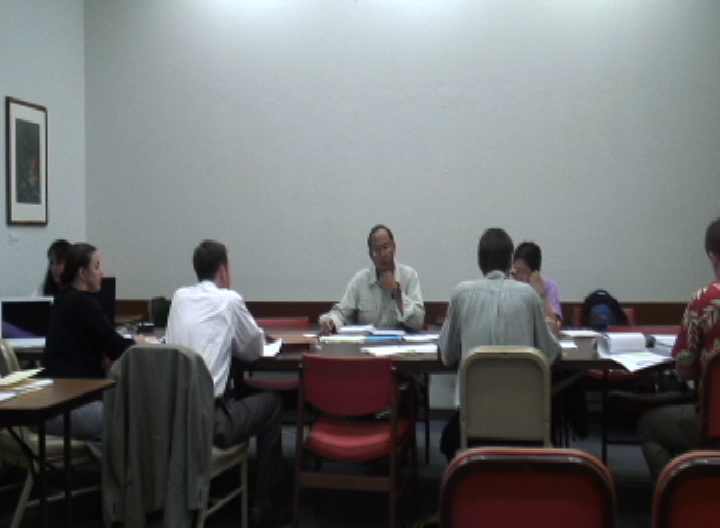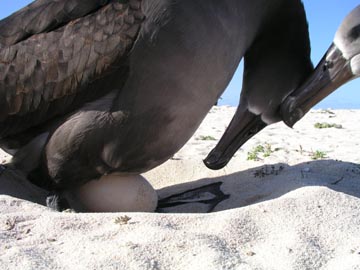Blog
News, updates, finds, stories, and tidbits from staff and community members at KAHEA. Got something to share? Email us at: kahea-alliance@hawaii.rr.com.
enforcement means everybody, folks.
From Miwa:
On June 13, the Hawai`i Board of Land and Natural Resources quietly denied the permit of HIMB disease researcher Greta Aeby, in the closing chapter of a historic enforcement action for the Northwestern Hawaiian Islands. Aeby was reported in 2006 by fellow researchers to be transporting potentially diseased coral shipboard in an open-flow system–a clear violation of her research permit.
After initially contesting the violation, she and HIMB finally accepted the enforcement action earlier this year. (But only after third-party legal intervention by us at KAHEA!) She remains under investigation for other violations related to illegal disease cultivation and importation.
We have taken some heat for standing up and urging the full enforcement of the law for this HIMB researcher. Do we hate HIMB? Do we hate researchers? Absolutely not. There are plenty of good people who work at HIMB, many of whom are our friends.
What we ARE saying is that no matter who you are, the rules apply. HIMB researchers, commercial and recreational fishers–all the same. The protective rules are in place for good reason, rules for which many people fought incredibly hard. Through many years, and sometimes at great personal expense, they fought to protect this place as an intact natural and cultural legacy for future generations. This is about responsibility and it is about respect. Responsible research is about respect for the resource and respect for the people to whom the resource ultimately belongs.
Thanks to the participation of over 100,000 members of the public, the Northwestern Hawaiian Islands are today protected as the largest no-take marine reserve on the planet. Permits are required to access the area, and research permits in particular, are considered a privilege for those researchers who are contributing directly to conservation of the area and can conduct their activities responsibly–with little to no impact. This is because our policies and rules in Hawai`i recognize that irresponsibly conducted research poses serious risks and can cause serious harms.
We commend the BLNR for upholding the rules in place to protect the Northwestern Hawaiian Islands. Through strong rules and strong enforcement, we can continue to keep this place as a true pu`uohonua. Forever.
We live in the endangered species capitol of the planet, islands impacted heavily by the onslaught of invasive species and the impacts of climate change on our Hawaiian reefs. In the face of all this, we believe that for this one, last intact and pristine Hawaiian place, we can act together to do the right thing.
conservation plan = more impacts? we don't get it.
A short video we put together on the new draft of a 15-year plan for the future of the Northwestern Hawaiian Islands.* We’ve read all 1,200 pages of it, and reviewed it with experts everywhere from Sierra Club to Environmental Defense. Our conclusion? We can do much, much better.
Now, we’re seeking signatures on a petition asking for a better, stronger Plan for this fragile wahi pana.
The current draft is a plan for conservation which, inexplicably, actually expands the footprint of human activity in this pristine and uniquely Hawaiian coral reef ecosystem.
In the largest no-take marine reserve on the planet, this draft of the Federal/State plan is proposing the construction of a “small municipality” on Midway, new cruise ships, more tourists, increases in extractive research, new risks of invasive species introductions, exemptions for fishing, and opening of the area to bioprospecting. An expansion of military activities–including sonar, ballistic missile interceptions, and chemical warfare simulations–would be allowed to go forward with no mitigations. The plan also disbands the existing citizen advisory council, which is pretty much the only opportunity for members of the public (non-government scientists, advocates, cultural practitioners, and resource experts) to participate in decision-making. Yeesh.
Over 100,000 people from all over the world helped establish the Papahanaumokuakea National Marine Monument and the Hawaii State NWHI Refuge–perhaps the most visionary legal marine area protections in history. We need to ask government managers for a plan which upholds these strong protections. We should be working towards full conservation, NOT creating and formalizing exceptions to the rules. That’s our position, anyway.
If you agree, please take a few seconds to add your name to the petition. This last intact, endangered and uniquely Hawaiian coral reef ecosystem deserves a plan for its FULL conservation. Unless we show broad public support, protections we fought so hard for will be paper, not practice.
*The hearings mentioned in the video are over, but there is still one week left to make your voice heard. More information at www.kahea.org. Deadline is July 8, 2008.
Last Wild Shoreline on Oahu's North Shore
From our friends at the Trust for Public Land, an opportunity to participate in efforts to protect forever some of the last wild shoreline on Oahu’s North Shore. KAHEA continues to support the efforts of TPL and others, as a member of the Ko’olauloa-North Shore Alliance. We are one of a broad network of community and non-profit groups joining their voices and efforts together to protect this shoreline forever:
On the North Shore of O’ahu, the scenic property surrounding the secluded Turtle Bay Resort includes over 850 acres along the coast and 400+ acres mauka (mountain side) of the highway. The undeveloped areas feature some of O’ahu’s last slice of “country” — wild coastal beaches, surfing breaks, dramatic landscapes, traditional fishing areas, threatened green sea turtle and endangered monk seal habitat, small local agricultural lots, and Hawaiian ancestral burial grounds. The area is a natural treasure valued by residents and visitors alike as a rural refuge. We have a once-in-a-lifetime opportunity to save this slice of the real Hawai’i for today and future generations.
For more information, check out www.tpl.org/turtlebay
Kuilima Resort Company (KRC) and its parent company Los Angeles- based Oaktree Capital Management are pressing forward with plans to expand the footprint of the resort by building five new hotels and additional condominiums, adding over 3500 units (2,500 hotel rooms and 1,000 condos). The project has sparked broad concern from community, business, and governmental leaders.
However, the owner’s own financial difficulties and the recent downturn of U.S. financial markets has produced a “green lining.” Beginning last year, KRC failed to pay its creditors, resulting in a foreclosure lawsuit filed by Credit Suisse, representing dozens of U.S. and foreign lenders. Debt for the resort is currently being traded at a fraction of its face value.
In her January 2008 State of the State address, Hawai’i Governor Linda Lingle announced a bold initiative to acquire the property for the public, stating:
“(W)e can’t speculate or sell ourselves into prosperity, but I do believe we have an opportunity to purchase a piece of our future. I am proposing that we buy the 850-acre Turtle Bay property on O’ahu’s North Shore.”
The Trust for Public Land is part of a community, government, private working group formed by Governor Lingle to explore creative ways of financing such a purchase, and to form public-private partnerships to protect the property. More information on the Governor’s initiative including updates on the progress of her advisory working group is available.
The goal of the working group is to negotiate a voluntary conservation sale and acquisition, plan for the enhancement and long-term financial stability of the existing resort, seek innovative ways to create high-quality jobs with low environmental impact, and create a sustainable future for the North Shore. The Trust for Public Land is also part of the Ko’olauloa North Shore Alliance, a network of community and non-profit organizations supporting the initiative to protect this country “forever.”
You can help. Your donations and ideas are welcome. Please donate now to provide essential financial support to the acquisition initiative — and feel free to contact the Governor’s Advisory Working Group at TurtleBayAWG@gmail.com to contribute your ideas.
(photo from Keep the North Shore Country)
Words from Molokai: "This island has a chance..."
By now, most of everyone has heard the news of the surprise announcement of the Molokai Ranch shut down. On the last days events, a few words to share from from Kahualaulani on Molokai:
We are still sorting it all out over here. And while it is a shock, it is not really a surprise…Molokai Ranch’s true colors have finally been shown. They have played the “employee card”: they couldn’t shove their unwanted development down the throat of this community, so now they will take it out on their own workers, while blaming the development opposition for the “need” to do this.
Indeed, the Ranch states in their press release: “Unacceptable delays caused by continued opposition to every aspect of the Master Plan means we are unable to fund continued normal company operations.” But this is so not true. The community did not object to “every aspect” of the Plan; the community objected to the La‘au development aspect of the Plan. We have been consistent from the start in saying the there are many good parts of the Plan (and the community put a lot of work into creating those parts), but that developing La‘au is unacceptable to the large majority of this community.
We have also been consistent in saying to Molokai Ranch and Plan supporters, lets all come back to the table and find solutions to this issue: let’s find real alternatives to this development, and other types of economic engines besides development. They chose not to listen, and to to try to ram-rod their project through. Wrong idea. And now they are bringing their oft promised/threatened “doomsday scenario” down on this community – by laying off their workers and starting to sell-off their lands. What a mean-spirited and cruel reaction to not getting their way (‘I’m taking my ball and going home!”) They have already sold half of Na’iwa (the ancient makahiki grounds) and Ka’ana (the birthplace of hula) looks to be next…
But let’s be clear here: all the “delays” were caused by Molokai Ranch’s own decisions: by making this whole thing into an “all or nothing” “take it or leave it” thing (either take/accept the Plan with La‘au development, or no Plan); by choosing not to listen to this community saying ‘”A’ole La‘au” (No to la‘au!); and by voluntarily withdrawing their shoddy EIS after massive community and LUC opposition to it, (and thus having to return to a draft EIS stage). They were also seriously “delayed”/affected by two recent Supreme Court Decisions – one that took away their allocation of potable water, and the other that neutralized their preferred method of transporting it. (But I don’t hear them blaming the Supreme Court!)
The sentiment in the community is that we feel deeply for the workers who have lost their jobs, and we will support them in whatever ways we can: by trying to find them new jobs, or by creating new jobs with better economic engines, and by helping to provide food during this time. Molokai takes care of her own.
But also, we see this as a great opportunity to bring stewardship of this island back to the people of Molokai. We were already working on various solutions before this happened: from investors with more appropriate endeavors, to the UPC windfarm, to conservation buyers, to buying the Ranch, to a combination of all of the above. Now we are going to push to bring those kinds of things to pass if we can.
It was a historic day yesterday, but now, with your help and continued support, we might truly be able to make history. This island has a chance to have economic, energy, and food independence – a truly sustainable and self-sufficient community. A hub of sustainable agriculture, environmental stewardship, Hawaiian culture and aloha. We can Ho’i i ka Pono! We can truly Keep Moloka’i, Moloka’i!
(first photo from rmayda on flickr, second from Paula Kawal.)
Links to articles:
Molokai Ranch Shutting Down (MPL Press Release)
http://www.themolokaidispatch.com/node/1837
“Doomsday” Has Arrived (Molokai Dispatch)
http://www.themolokaidispatch.com/node/1851
Mayor Tavares And Molokai Council Member Mateo Respond To Ranch Closure (Molokai Dispatch)
http://www.themolokaidispatch.com/node/1841
Lingle Focuses On Molokai Ranch Employees, Island’s Economy (Molokai Dispatch)
http://www.themolokaidispatch.com/node/1840
Molokai Ranch Shuts Down (Molokai Times Article and community and reader’s comments)
http://www.molokaitimes.com/articles/8324115936.asp
Molokai Ranch to quit island (Honolulu Star Bulletin Article)
Stung by rejection of its planned luxury project, the owner will lay off 120 staffers and seal off the land…”
http://starbulletin.com/2008/03/25/news/story01.html
Molokai Ranch to close, lay off 120 (Honolulu Advertiser Article)
http://www.honoluluadvertiser.com/apps/pbcs.dll/article?AID=/20080325/NEWS01/803250367
200 Luxury Estates a good thing for Molokai?
From Marion:
Last week, KAHEA submitted written testimony to the State Land Use Commission in opposition to “the proposal by Molokai Properties Limited to build 200 luxury estates at La’au Point” which will negatively impact the environment and culture.
Our comments point out that: although there is overwhelming scientific evidence supporting that the main Hawaiian Islands serve as foraging and breeding grounds for monk seals and millions of dollars for research and monitoring have been set aside, little has been done by the state and federal governments to permanently protect habitat — like that La’au point. The truth is that the single most important action we can take to save monk seals is provide them places of permanent pu`uhonua, true and forever sanctuaries. Monk seals survive best when left alone in a place where humans do not dominate the landscape, in sanctuaries marked only by the presence of blowing sands and waves crashing against jagged lava formations at the water’s edge.
Further, because “Molokai is one of a few communities that still have resources to sustain traditional subsistence”, they need to be honored and protected to ensure the perpetuation of these traditional practices of gathering for their families and communities. The reason why these practices still remain today have to do primarily with the fact this shoreline is undeveloped and difficult to access.
The proposed development will limit access to this 5-mile stretch of coastline by providing only two points of entry, one at each end of the proposed coastline development even though the “state law requires that public access to the shoreline be available every quarter mile” which is clearly not honored in this proposal.
The Molokai community has voiced their undying concern regarding the relentless and greedy development plans of Molokai Properties Limited. The community has no interest in having a community split and culturally and socially restricted by the influx of big money. Today, they are standing up, protecting their inherent rights to collect what they need from the mountains to the oceans that keeps their culture alive.
To make this place no more than a picture postcard tropical beach destination is to strip it of its most fundamental and uniquely Hawaiian identity. We stand together with communities on Molokai to share the view that the sea, land, culture, and people remain vital in marking this land as a Hawaiian place.
Click here to read comments on the EIS:
KAHEA’s comments in opposition to the development at La’au Point
Office of Hawaiian Affairs’ Comments on the development La’au Point
Uncle Buzzy Calls for Renewed Committment to Pu`uhonua, Sunday's Star-Bulletin
We opened up the Star-Bulletin on Sunday, and there in the Gathering Place section was long-time NWHI advocate Uncle Buzzy, calling for a renewed public commitment to a true pu`uhonua — a ‘forever sanctuary’ — in the Northwestern Hawaiian Islands. Ho‘omaika‘i ia Uncle Buzzy!
Uncle Louis “Buzzy” Agard, is a founding Board Member of KAHEA and a revered kupuna (elder) who lived and fished in the Northwestern Hawaiian Islands (NWHI) for many years. In 2001, he was honored by President Clinton at the establishment of the NWHI Coral Reef Ecosystem Reserve. Today, Uncle Buzzy still serves on the citizen advisory council (RAC) for the Reserve and remains a staunch advocate for the strongest possible protections in the NWHI.
Excerpts from his editorial:
In 2005, the state of Hawaii finally embraced what native Hawaiians have known for generations: the Northwestern Hawaiian Islands are a delicate, sacred ecosystem that must be respected. The state took a visionary step forward establishing the first state marine refuge in the NWHI and requiring that human activity there “do no harm” to this fragile ecosystem. In 2006, the federal government followed suit, establishing the Papahanaumokuakea National Marine Monument. These protected areas rely on permits to control the human footprint up there.
But today more and more people are going to the NWHI for research, education, even sightseeing. Any time you set something off limits, people want to go there; this is the irony of our success in establishing protections for the Northwestern Hawaiian Islands. Already this year, permits have been granted to allow unlimited numbers of people to go to the NWHI to do any kind of dredging, discharging and taking, even recreational fishing. Researchers have violated their permits and we have seen little will for enforcement. This is wrong. We must change our attitude about this place entirely — there should be no human footprint there.
Millions of dollars have been set aside by the federal government, and with good intentions. But money is a magnet for people. They see the money and their first question is, “What can I propose to do up there?” A scientist will say to the Hawaiian fisher, “Take only what you need,” but in his research practice he doesn’t heed his own advice. This is not why the people of Hawaii and the world fought so hard to protect this place.
The Northwestern Hawaiian Islands is a place of great hope for the future of the resources in our oceans, and it is for this reason that we set it aside. Let us honor the commitment we made to protect this fragile place as a true pu`uhonua.
You can see the full letter at: http://starbulletin.com/2008/03/02/editorial/commentary.html
being heard? yup, it feels good.
From Marti:
I admit to still being on cloud 9 about the recent announcement of the hearing officer’s decision on KAHEA’s standing to participate in the contested case on the research permit violations in the NWHI. Hooray! What an amazing affirmation of the power of showing up.
We have attended every possible hearing about research permits to the NWHI and raised serious concerns about the lack of enforcement action on these research permit violations. We have shown up to talk about the lack of standards to determine who should be allowed up there and the lack of best practices to ensure their activities do no harm, as the law requires. We have again and again said that these research permit violations are a serious breach of public trust, and that rules should apply equally, no matter who is in violation–everyone should be held to the same standard: fishers, researchers, sight-seers, everyone.
I wish had a dime for every time I’ve heard someone say with regards to these research violations, “Trust me, researchers would never harm the resource.” Talk about totally missing the point. The point is that researchers, like everyone else, are obligated to know and follow the rules put in place to protect this fragile public trust resource. Simple as that. The fact is most people don’t ever to intend to harm the environment, but they do because they don’t follow the rules, don’t think that their actions could have an impact.
It was incredibly empowering to sit at that hearing table – elbow to elbow with HIMB’s attorney and the Attorney General on behalf of DLNR – and have an impartial officer of the court listen to all three sides. We had an equal opportunity to present arguments and evidence. And in the end, this impartial officer said, “Yes, KAHEA brings a meaningful perspective to this discussion and should be party to this case.”
Wow. For that, my faith in the public decision-making process is renewed. We couldn’t have asked for a more meaningful affirmation of our voice and role.
Too often the voices of those most directly affected by the decisions of officials are marginalized or even lost altogether. It is easy for money and politics to drive decisions. But when those influences are stripped away and those who have nothing to give but love for our ‘aina – people like Uncle Buzzy – can sit at a table and be heard on equal terms with all rest… that is when the best decisions are made.
It was these people – those without power or money – that led the struggle for the strongest possible protections in the Northwestern Hawaiian Islands and successfully made their voice heard. And it will be these same people who will continue to ensure that those protections are fully implemented and enforced…. because these protections are nothing if they aren’t enforced, fully.
Hooray, hooray today–for the little guy!
Highlights of KAHEA’s concerns about lack of DLNR enforcement (from our recent webpage update):
The violations were first reported to DLNR staff in May 2006 while the vessel was still in the NWHI. But DLNR staff failed to notify the proper enforcement division, DOCARE, until late February 2007, almost a year after the infractions occurred. No investigators met the ship when it docked in Honolulu to inspect what the researchers brought back with them.
“This is a major problem,” said Marti Townsend, Program Director for KAHEA. “The history of close working relationships between DLNR and HIMB staff has clearly called into question DLNR’s ability to be objective and properly enforce the law.”
Before the incidents were investigated by DOCARE and voted on by the Land Board, staff with the Aquatics Division of DLNR attempted to negotiate a penalty with the researchers at HIMB. The staff brought the enforcement action before the BLNR twice – first in January 2007 and again in July 2007. Both times the staff recommended that the Land Board impose weakened penalties against the HIMB researcher, side-stepping the Refuge’s strict “one strike” law that prohibits future permits to be granted to past permit violators.
“Given all of the tremendous public support for the strongest possible protections, and political will for the creation of these protections, it is astonishing that personal friendships and financial ties still seem to determine the near absolute lack of enforcement of NWHI rules,” said Townsend.

